-
Garden

How do dusk to dawn lights work?
Dusk to dawn lights, often referred to as outdoor security lights, have become a staple in modern outdoor lighting solutions. These fixtures offer a seamless and energy-efficient way to illuminate outdoor spaces, providing both safety and convenience. But have you ever wondered how these lights work their magic, effortlessly turning on as the night falls and gracefully dimming at dawn? Let's unravel the mystery. At the heart of dusk to dawn lights lies a remarkable innovation—the photocell or sensor. These sensors are sensitive to changes in ambient light levels. As the sun sets and natural light diminishes, the photocell detects this decrease in luminance. When the light level reaches a predefined threshold, the sensor springs into action, signaling the light fixture to illuminate the surroundings. This automated process ensures that your outdoor spaces are well-lit during the evening and nighttime hours. Conversely, at the break of dawn, as daylight gradually returns, the photocell's keen eye detects the increasing light levels. Once the luminance reaches a specified limit, the sensor sends the signal to power down the light fixture, conserving energy during daylight hours. This intelligent and hands-free operation not only enhances convenience but also contributes to energy savings and heightened security. In essence, dusk to dawn lights are a testament to the marriage of technology and nature, ensuring that light is provided precisely when and where it is needed.
-
Software and Applications

How do amazon wishlists work?
Amazon wishlists, an integral part of the world's largest online marketplace, serve a dual purpose – simplifying the shopping experience for buyers and offering a treasure trove of data-driven opportunities for sellers. For buyers, Amazon wishlists are a convenient means to organize their shopping aspirations. When they stumble upon a product they desire but aren't ready to purchase immediately, they can add it to their wishlist with a simple click. Wishlists can be categorized, prioritized, and shared with friends and family, making them a versatile tool for gift planning and shopping management. Buyers can also set price alerts, allowing them to receive notifications when their desired items go on sale, ensuring they snag the best deals. On the flip side, for sellers, wishlists provide invaluable insights into consumer preferences and market trends. By monitoring which products buyers are adding to their wishlists, sellers can tailor their inventory to meet demand. Additionally, sellers can offer exclusive discounts or promotions to entice wishlist users to make a purchase. Leveraging wishlists as a marketing tool, sellers can engage potential customers directly, providing a personalized shopping experience. In this comprehensive guide, we'll delve into the intricacies of Amazon wishlists, exploring how they work for both buyers and sellers, and uncovering strategies to optimize their use. Whether you're a shopper looking to streamline your online purchases or a seller aiming to boost sales, understanding the power of Amazon wishlists is a valuable asset in the ever-evolving landscape of e-commerce.
-
Kitchen
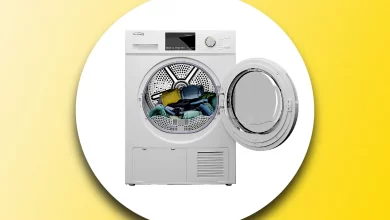
How do ventless dryers work?
Ventless dryers, a modern laundry marvel, are changing the way we approach the age-old chore of drying clothes. Unlike traditional vented dryers that expel hot, moist air outside through ducts, ventless dryers operate through innovative moisture management systems. Two main types of ventless dryers, condenser and heat pump, take center stage in this laundry revolution. Condenser ventless dryers heat the air inside the drum, which circulates through the damp laundry. As this warm, moisture-laden air travels through the clothes, it encounters a cold surface within the dryer, causing the moisture to condense into water droplets. These droplets are then collected in a dedicated water tank or reservoir, eliminating the need for external venting. This ingenious internal moisture condensation process makes condenser ventless dryers an ideal choice for those in search of flexibility in placement and reduced risk of moisture damage to their homes. Heat pump ventless dryers, on the other hand, employ an even more energy-efficient approach. They draw in ambient air, heat it, and pass it through the drum to dry the clothes. Subsequently, the warm, moisture-laden air passes through a heat exchanger, where the moisture condenses into water. The key difference here is that heat pump dryers recycle and reuse the warm air, reducing the need for constant heating of fresh air and making them exceptionally eco-friendly and cost-effective in the long run. Ventless dryers also offer versatility in placement, reduced allergen dispersion, and gentle drying for delicate fabrics, among other advantages. However, they may have slightly longer…
-
Room

How do cooling beds work?
Are you tired of tossing and turning in the heat, searching for the cool side of the pillow on sweltering nights? Cooling beds might be the sleep solution you've been dreaming of. But how do these innovative mattresses work their magic to keep you comfortably cool? Cooling beds are designed with cutting-edge technology and materials that prioritize heat management. They employ heat-dissipating materials like gel-infused memory foam and natural latex to absorb and disperse body heat, ensuring a balanced sleeping temperature. In addition to this, many cooling beds feature phase change materials (PCMs), capable of storing and releasing heat energy as needed, effectively regulating temperature fluctuations throughout the night. But it doesn't stop there. These beds also incorporate moisture-wicking technology to keep you dry and comfortable, even if you tend to perspire during sleep. With various types of cooling beds available, such as gel-infused memory foam, latex, innerspring, water-cooled, and hybrid options, you can choose the one that best suits your sleeping preferences. In this comprehensive guide, we will delve into the intricate workings of cooling beds, exploring the science behind their temperature-regulating capabilities. Say goodbye to sleepless, sweaty nights, and hello to a more restful and refreshing slumber with a cooling bed tailored just for you.
-
Toys

How Do Wack a Pack Balloons Work?
Wack a Pack balloons, those delightful novelties that never fail to surprise and amuse, are more than just colorful inflatables. They are a blend of science, engineering, and sheer entertainment. The fundamental question that often piques curiosity is, "How do Wack a Pack balloons work?" Let's delve into the captivating world of these self-inflating wonders and uncover the secrets behind their seemingly magical transformation. At first glance, a Wack a Pack balloon may appear no different from any other latex balloon. However, it holds a captivating secret within its colorful confines. When you tap or smack the balloon with a certain degree of force, you trigger a chemical reaction that sets the inflation process in motion. Inside the balloon lies an airtight pouch containing a mixture of two common household substances: baking soda and citric acid. When these two ingredients come into contact, they engage in a lively chemical dance, producing carbon dioxide gas as their offspring. This carbon dioxide gas, unable to escape from the confines of the balloon, exerts pressure on its walls, causing it to inflate rapidly. The result? A delightful and unexpected pop that never fails to bring a smile. This charming interplay of chemistry and engineering, cleverly concealed within a simple balloon, has made Wack a Pack balloons a staple of parties, celebrations, and gatherings. But the story doesn't end here; it continues with modern innovations, personalization options, and eco-friendly considerations that add depth and variety to the world of Wack a Pack balloons. Join…
-
Game
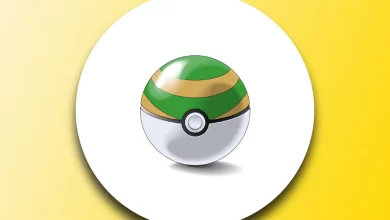
How Do Nest Balls Work?
Nest Balls, those unassuming yet vital tools in the Pokémon trainer's arsenal, hold the key to capturing those elusive low-level Pokémon efficiently. If you've ever wondered how Nest Balls work and when to use them, you're in the right place. These specialized Poké Balls are designed with a distinct capture rate formula that sets them apart from the standard Poké Balls in the Pokémon universe. The magic behind Nest Balls lies in their level-dependent capture rate. As the level of the wild Pokémon decreases, the effectiveness of Nest Balls increases significantly. In fact, the formula for Nest Ball capture rate is 3 * (41 - Wild Pokémon's Level) / 40. This means that for those low-level critters just starting their journey, Nest Balls become a trainer's best friend. However, it's crucial to note that Nest Balls may lose their efficiency when used against higher-level Pokémon, typically those surpassing level 41. So, when should you reach into your bag and grab a Nest Ball? These specialized Poké Balls are ideal for early-game captures, breeding, shiny Pokémon hunting, and those encounters where you're facing off against Pokémon with naturally low catch rates. Understanding the nuances of Nest Balls can elevate your Pokémon-catching game and help you become a more successful trainer. So, dive into the world of Nest Balls and embark on a journey to catch 'em all with precision and style.
-
Game

How Do Heal Balls Work?
In the captivating world of Pokémon, one of the essential tools at a trainer's disposal is the Heal Ball. These distinctive pink and white Poké Balls offer a unique blend of functionality that sets them apart from their standard counterparts. But how do Heal Balls work, and why are they so revered by trainers? At their core, Heal Balls are designed to streamline the process of capturing wild Pokémon while ensuring their well-being. When you toss a Heal Ball at a wild Pokémon, it encapsulates the creature with the intention of making it a part of your team. What sets Heal Balls apart is their simultaneous healing effect. Upon capture, Heal Balls initiate an instantaneous healing process, restoring the captured Pokémon's HP to its maximum and curing any status conditions that may afflict it. This means that the Pokémon you capture with a Heal Ball is not only secured for your team but also in prime battling condition. The advantages of Heal Balls are manifold. They save valuable time by obviating the need to visit Pokémon Centers for healing, making them ideal for trainers constantly on the move. Moreover, they serve as a strategic tool during battles, providing emergency healing for your team. To obtain these versatile Poké Balls, you can visit Pokémon Marts, Poké Marts, or even receive them as gifts during your adventures. So, as you traverse the Pokémon world, remember the magic of Heal Balls and their invaluable role in your journey.
-
Sport

How Do Charity Golf Tournaments Work?
Charity golf tournaments are fascinating events where the love for golf intersects with the spirit of giving. These tournaments operate as unique fundraising platforms, bringing together avid golfers and philanthropists for a common cause. To participate, individuals usually register for the event, paying a registration fee that often includes green fees, meals, and a charitable donation. Corporate sponsors also play a vital role, contributing financially or providing prizes and giveaways, while receiving recognition for their support. What sets charity golf tournaments apart is their dedication to charitable causes. Funds raised during these events are channeled toward specific nonprofit organizations or causes, making a tangible impact on healthcare, education, or community development. Participants often engage in additional fundraising activities, such as auctions and sponsorships, to maximize contributions. With a variety of formats, from scrambles to stroke play, these tournaments cater to golfers of all skill levels, ensuring an inclusive and enjoyable experience for all. So, dive deeper into the world of charity golf tournaments and discover the perfect blend of golfing prowess and philanthropic spirit.
-
Room
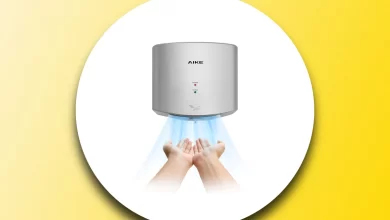
How do hand dryers work?
Have you ever wondered about the inner workings of those sleek, wall-mounted devices found in public restrooms? Yes, we're talking about hand dryers! In this journey of exploration, we'll unveil the science behind the seemingly straightforward act of drying your hands and delve into the fascinating world of hand dryer technology. At its core, a hand dryer operates on a straightforward yet ingenious principle: the power of forced air. When you place your wet hands under the nozzle and press that iconic button, a robust motor springs to life. This motor propels a fan, which swiftly draws in ambient air from the surrounding environment. The air is then rapidly heated using an internal heating element, typically crafted from nichrome wire. It's this combination of high air velocity and elevated temperature that makes for an efficient hand-drying process. As the heated air jets out of the dryer, it envelops your hands in a warm embrace. What happens next is pure science magic. The added heat energy from the air is transferred to the water on your skin, energizing the water molecules and causing them to break free from their liquid state, transforming into vapor. Essentially, the water on your hands is evaporating, and this phenomenon is the key to achieving dryness. But that's just the beginning of our journey. We'll explore various types of hand dryers, their advantages, and even glimpse into the exciting future of this everyday restroom companion. So, fasten your seatbelts, because we're about to demystify the science…
-
Kitchen
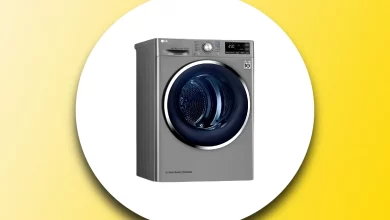
How Do Dryers Work?
In the realm of modern household appliances, the dryer stands as a stalwart companion in our daily lives, effortlessly transforming a load of wet laundry into warm, fluffy perfection. But have you ever wondered how these marvels of technology actually work their magic? Let's embark on a journey of discovery to unravel the mechanisms behind efficient laundry drying. At its core, a dryer is designed to harness the power of heat, airflow, and moisture removal. When you initiate a drying cycle, the dryer springs into action. If you have an electric dryer, it activates an electric heating element, while a gas dryer ignites a gas burner. Both of these elements generate heat that warms the air inside the drum. As the drum begins to rotate, your wet clothes tumble freely, allowing the warm air to penetrate the fabric. This, in turn, causes the moisture within the clothes to evaporate and transform into steam. The hot, moisture-laden air is then expelled through an exhaust vent, ensuring that the humid air is vented outside, preventing it from lingering in your laundry room. But the magic doesn't stop there. Some dryers are equipped with moisture sensors that play a crucial role in the drying process. These sensors continuously monitor the moisture levels within the drum. When the sensors detect that your clothes are sufficiently dry, they signal the dryer to stop the cycle, preventing over-drying and ensuring that your garments emerge in optimal condition. Intrigued to learn more about how dryers work and…
-
Care

How do cedar balls work?
Cedar balls, those unassuming wooden orbs, hold a secret that has been cherished for generations - their remarkable ability to keep moths away from our cherished clothing and textiles. But how exactly do cedar balls work their magic? Let's embark on a journey to unravel the mysteries. At the heart of cedar balls' effectiveness lies the natural oils found in cedarwood. These oils contain compounds like cedrol and cedrene, which emit a fragrant aroma that humans find pleasant but moths abhor. When strategically placed in closets, wardrobes, or storage spaces, cedar balls create an invisible shield, confusing moths and making it nearly impossible for them to locate and lay eggs on your garments. It's like having a guardian of freshness in your closet. But that's not all - cedar balls offer a dual benefit. They also act as moisture absorbers, maintaining the right humidity levels in your storage areas. By absorbing excess moisture, they prevent the damp conditions that can lead to mold and mildew growth, ensuring your clothing remains fresh and clean. So, whether you're battling a persistent moth problem or simply looking to maintain a pristine wardrobe, cedar balls have you covered. Their natural, chemical-free approach to moth prevention, combined with their moisture-absorbing properties, makes them an invaluable addition to any closet or storage space.
-
Sport

How Do Pickleball Tournaments Work?
Pickleball tournaments, the heartbeat of this rapidly growing sport, offer players of all levels a chance to test their skills, experience the thrill of competition, and bask in the camaraderie of fellow enthusiasts. In "How Do Pickleball Tournaments Work?" we embark on a journey to uncover the inner workings of these dynamic events. At the core of any pickleball tournament are its two primary formats: round-robin and single-elimination. The former resembles a choreographed dance, with players divided into groups, known as pools or flights, engaging in multiple matches. Points are awarded not just for wins and losses but also for games won, making every point count. In contrast, the single-elimination format mirrors a high-stakes showdown, where each match is a do-or-die affair. Lose once, and you bid adieu to the tournament. But the intrigue doesn't end there. From registration intricacies to prize structures, this guide delves into the nitty-gritty of participating in pickleball tournaments. We decipher the scoring system, explore rules and regulations unique to tournament play, and offer tips on preparation. Whether you're a novice looking to dip your paddle into the competitive arena or a seasoned pro seeking to fine-tune your strategies, "How Do Pickleball Tournaments Work?" equips you with the knowledge to navigate the exhilarating world of pickleball tournaments with confidence and finesse. So, gear up, because victory awaits in the fast-paced, addictive world of pickleball!
-
Hunting and Camping
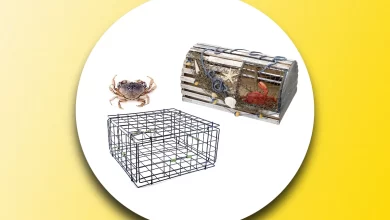
How Do Crab Traps Work?
Crab traps, those ingenious contraptions that bridge the gap between crabbers and their delectable quarry, are a marvel of simplicity and efficiency. These specialized devices, designed for the capture of crabs, offer a fascinating blend of science and strategy. As we delve into their mechanics, materials, and techniques, a world of coastal exploration and culinary delight unfolds. At their core, crab traps are crafted to entice crabs through a strategic combination of bait and design. Be it the traditional wire-mesh pots, circular traps, topless traps, or crab snares, each type employs a unique approach. Bait is the allure, carefully placed within the trap to tantalize the senses of these crustacean creatures. As crabs approach, they encounter entrance mechanisms, such as funnel-shaped openings or baited loops, guiding them into the trap's embrace. Some traps go a step further, incorporating escape mechanisms, like rings, to release undersized or non-target crabs, ensuring adherence to local regulations. The world of crabbing is a fascinating one, where understanding the intricacies of crab traps is key to a successful catch. From the choice of bait to the art of trap placement and compliance with regional regulations, there's much to explore. So, whether you're a seasoned crabber seeking to refine your skills or a novice embarking on your first crabbing adventure, join us in unraveling the question, "How do crab traps work?" and unlock the secrets to a fruitful and satisfying crabbing experience.
-
Hunting and Camping
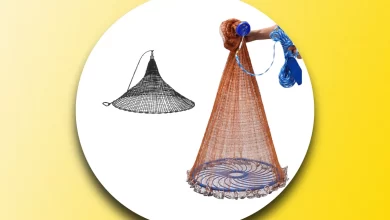
How Do Cast Nets Work?
Diving into the captivating world of angling, one cannot help but be intrigued by the ancient and artful method of casting nets. These versatile tools, with their age-old charm, have been employed by fishermen for generations, connecting humanity with the rhythmic ebb and flow of aquatic life. In this comprehensive guide, we unravel the mysteries of how cast nets work, shedding light on their intricate mechanics, diverse designs, and even their cultural significance. At the core of cast nets lies a delicate balance between design and technique. They are meticulously crafted from nylon or monofilament lines, with a circular or square shape, each serving a unique purpose. The process of casting a net involves a carefully choreographed dance of motion and timing. As the net is thrown, it unfurls beneath the water's surface, creating a wide coverage area. Weighted leads ensure a swift descent, and the net surrounds any unsuspecting fish within its grasp. Timing is crucial – the net must sink to the desired depth before the skilled hand of the angler pulls it closed, entrapping the catch. But cast nets are not merely tools; they hold cultural significance in many coastal communities worldwide. Passed down through generations, the art of cast netting reflects the profound connection between humanity and the aquatic realm. Join us as we explore the fascinating world of cast nets, from their practical applications to the traditions that keep their legacy alive. Whether you're a seasoned angler or a curious novice, this guide will provide…
-
Hunting and Camping
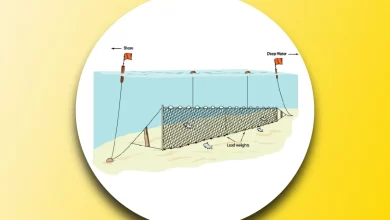
How Do Gill Nets Work?
Gill nets, with their age-old legacy, are a fascinating subject in the realm of fishing. This time-honored technique, employed by both commercial and artisanal fishermen, holds within its finely woven threads a unique mechanism for harvesting aquatic treasures. At its core, the magic of gill nets lies in their design, which leverages the innate behavior of fish as they navigate their aquatic habitats. As fish traverse the water, they encounter these nets suspended vertically in their path. Herein lies the intrigue—fish, driven by instinct, attempt to swim through the meshes, only to find themselves ensnared by their gills. It's a precise entanglement, allowing fish to enter but making it nearly impossible for them to exit in reverse. This fundamental principle has made gill nets a reliable tool for capturing a wide range of species, from salmon and herring to flatfish and flounder. But gill nets are not a one-size-fits-all solution. They come in various types, each suited to specific fishing scenarios and target species. Drift gill nets dance with ocean currents, while set gill nets stand firm, and trammel nets employ multiple layers. Additionally, multi-mesh nets offer versatility with diverse mesh sizes in a single net. Understanding these nuances is crucial for successful gill netting. Join us on an exploration of the mechanics, types, and environmental considerations of gill nets as we delve into the intricate world of this age-old fishing method.
-
Toys

How Do Crystal Balls Work?
Crystal balls, those captivating orbs of polished crystal, have intrigued humanity for centuries with their mystique and the promise of hidden knowledge. But how do crystal balls work, and what secrets do they hold within their shimmering depths? At their core, crystal balls are a tool for divination and introspection, often associated with fortune-telling. Their usage traces back to ancient civilizations like the Egyptians and Greeks, who believed in the power of reflective surfaces to reveal hidden truths. Over time, crystal ball gazing evolved, gaining prominence during the Middle Ages in Europe and experiencing a resurgence during the Renaissance era. The process of using crystal balls involves several key elements. It begins with the selection of an appropriate crystal, with quartz, amethyst, and obsidian being popular choices, each believed to bring its unique energy to the practice. Scryers, those who practice crystal ball gazing, enter a meditative state, clear their minds, and focus their intention. As they gaze into the crystal ball's smooth surface, they allow the play of light and reflection to conjure images, symbols, or visions. These are interpreted as messages from the subconscious mind or the spiritual realm.
-
Care
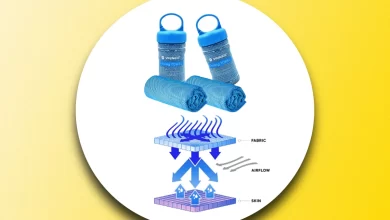
How do cooling towels work?
Cooling towels, those magical companions on scorching summer days, provide a welcome respite from the relentless heat. But how do these unassuming pieces of fabric work their refreshing wonders? Let's embark on an enlightening journey to unravel the science behind cooling towels. At the heart of cooling towels lies the concept of evaporative cooling, a natural phenomenon we've all experienced on a warm, breezy day. These towels are carefully crafted from specialized materials, such as microfiber or PVA (Polyvinyl acetate), known for their high absorbency and quick-drying properties. When you soak a cooling towel in water and drape it around your neck or place it on your skin, a fascinating process begins. As the towel absorbs moisture, it holds onto it within its fabric. When exposed to the warmth of the surrounding air, the absorbed water starts to evaporate slowly. It's during this phase change, from liquid to vapor, that the real magic happens. The water molecules absorb heat from your body, leaving you with a delightful cooling sensation. This process continues as long as the towel remains wet and there's airflow, offering you a refreshing escape from the sweltering sun. But what sets cooling towels apart from other cooling methods is their versatility and eco-friendliness. You can use them during workouts, outdoor adventures, or simply as a quick way to cool down on a hot day. Plus, they require no electricity or batteries, making them a cost-effective and environmentally conscious choice. So, the next time you face the heat,…
-
Physics and Mechanics
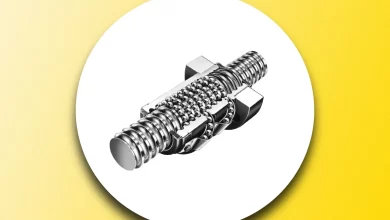
How do ball screws work?
Ball screws, the unsung heroes of precision engineering, play a pivotal role in a multitude of industries where accurate linear motion is paramount. These ingenious devices are designed to convert rotational motion into precise linear movement with unparalleled efficiency. But how do ball screws work their magic, and why are they favored over other linear motion mechanisms? At their core, ball screws consist of three essential components: a screw shaft with a helical groove, ball bearings, and a nut. The key to their exceptional performance lies in the use of ball bearings. As the screw shaft rotates, the ball bearings travel within the helical groove, propelling the nut along the shaft. This rolling action replaces the traditional sliding friction found in other mechanisms, resulting in remarkably high efficiency, often exceeding 90%. Ball screws find applications in a diverse array of fields, including CNC machining, robotics, aerospace, automotive manufacturing, and medical devices. Their advantages, such as precision, low friction, high load-carrying capacity, and minimal backlash, make them indispensable in these industries. Whether you're designing cutting-edge machinery or simply curious about the inner workings of mechanical wonders, understanding how ball screws operate is a fascinating journey into the world of precision engineering.
-
Computers and Electronics

How do solar lights work?
Solar lights, those ingenious fixtures adorning gardens, pathways, and even homes, have a captivating secret hidden beneath their sleek exteriors. They are more than just sources of illumination; they are emissaries of renewable energy, efficiency, and environmental sustainability. At the core of these illuminating marvels lies a process known as the photovoltaic effect. Solar panels, typically composed of semiconductor cells, are the key players. When sunlight graces these panels, a mesmerizing transformation unfolds. The photons in sunlight excite electrons within the cells, prompting them to break free from their atoms and generate a direct current (DC). This electricity is then stored within rechargeable batteries, patiently awaiting the moment it's needed. As twilight envelops the landscape, a controller, akin to an orchestra conductor, orchestrates the flow of electricity from the battery to power energy-efficient LED lights. These lights, designed to consume minimal energy while emitting a radiant glow, cast a warm and inviting aura upon the surroundings. This elegant synergy between technology and nature results in an eco-friendly, cost-effective, and versatile lighting solution that's revolutionizing outdoor illumination. Join us on a journey to unveil the mysteries of solar lights as we delve into their inner workings, explore the benefits they bring to both individuals and the environment, and envision the promising future of sustainable lighting. Discover how these unassuming fixtures tap into the boundless energy of the sun to brighten your nights and illuminate the path to a greener tomorrow.
-
Care
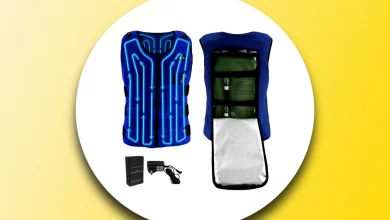
How do cooling vests work?
Cooling vests, those ingenious innovations of wearable technology, have garnered attention for their remarkable ability to combat heat and elevate comfort levels. But how do these vests actually work their magic? Let's delve into the fascinating science behind them. At their core, cooling vests employ three fundamental principles: evaporation, conduction, and phase change. Evaporative cooling vests, for instance, make use of specialized materials that can absorb and retain water. Once saturated, these materials gradually release moisture through evaporation, simultaneously drawing away heat from your body. This process mimics the body's natural cooling mechanism of sweating, providing a refreshing sensation even in scorching conditions. On the other hand, phase change cooling vests incorporate remarkable materials known as phase change materials (PCMs). These substances change from a solid to a liquid state at specific temperatures. When you wear a phase change vest, these materials absorb and store heat from your body, maintaining a consistent temperature for hours. It's akin to having an ever-ready reservoir of coolness right on your body. And last but not least, active cooling vests take a high-tech approach, utilizing fans or pumps powered by electricity to deliver immediate and continuous cooling. So, whether you're an athlete looking to enhance performance or someone seeking relief from the sweltering heat, understanding how cooling vests work can help you make the right choice for your cooling needs.